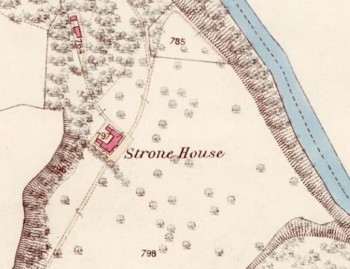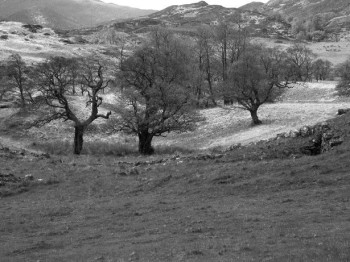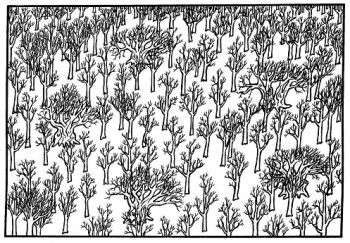Supporting guidance for Ancient Wood Pasture
Date published: 4 October, 2017
For recent changes to this guidance, please see the bottom of the page.
Introduction
This option supports ancient wood pasture, protecting it by careful grazing management and ensuring a continuing supply of old trees into the future.
Ancient wood pastures are an important but now scarce element of the historic environment still evident in today’s landscape. They are areas of grazed pasture, heath or open hill with a scattering of open-grown veteran trees.
Ancient wood pastures are historic landscapes of cultural importance, and they provide habitats for some rare and specialised wildlife that depend on the old trees.
What does an ancient wood pasture look like?
The old, open-grown trees are the main tell-tale. Large canopies indicate a long history of growing in an open, grazed landscape. Some of the trees may also show signs of having been lopped or pollarded (a method of pruning) in the past.
To get an idea of what veteran open grown trees look like, consult the guidance on the Scottish Forestry website at:
Ancient woodland pasture guidance
Most ancient wood pasture sites can be confirmed by two simple questions:
1. Was the woodland present as open woodland on the first edition Ordnance Survey maps?
These maps, from the 1860s, marked open woodland and parks with scattered tree symbols, distinct from closed canopy woodland and enclosed land.

This is an example of how ancient wood pasture or parkland was mapped on these early maps.
Other old maps, paintings, photos and estate records may also be worth investigating.
2. Are open-grown, veteran trees present?
This indicates that the land has been historically managed as open, grazed woodland.

Open grown veteran oaks in upland wood pasture – © Kate Holl, Scottish Natural Heritage

Pollarded veteran alders in wood pasture, Glen Strathfarrar – © Kate Holl, Scottish Natural Heritage
Types of ancient wood pasture
The tree species present in wood pasture tend to reflect the natural woodland cover typical of the soils. But in the lowlands we can find non-native species introduced by deliberate planting into for designed landscapes.
All of our main woodland types can be found in wood pastures throughout the uplands and lowlands of Scotland. The lowland oak wood pastures are perhaps the most readily identified, with large-girth ancient trees and relatively fertile (sometimes improved) pasture.
These have retained their value as cattle parks or as amenity ground for larger estates.

Lowland oak wood pasture at Loch Wood, Dumfriesshire – © Kate Holl, Scottish Natural Heritage

Lowland oak wood pasture at Dalkieth – © Kate Holl, Scottish Natural Heritage
What needs to be done?
There are two aspects to managing ancient wood pastures: the trees and the pasture (or ground vegetation).
Trees
Open-grown trees characteristic of wood pastures support wildlife less-suited to denser woodland. The trees tend to naturally and slowly age, giving a continuous supply of deadwood and attracting mosses, fungi and more insects. This dead and damaged wood is very valuable.
Things to remember:
- avoid pruning trees and clearing up dead wood
- retain old trees and their wildlife, while bringing on replacement mature trees to maintain the habitat
- protect the trees from damage from livestock, spray drift and soil compaction around the root areas. You could use wooden post and rail fencing or metal tree guards
- allow regeneration of occasional new trees that are well spaced and will not outcompete the veteran trees. In extensive grazing systems, this would naturally occur when grazing levels are low enough to allow thorn scrub to develop, and eventually individual trees to regenerate into the protective thorn scrub. In most of our wood pasture systems the grazing systems will not allow this to happen. Where this is the case, protect young tree seedlings or plant replacement trees
- where planting, aim for a stem density of no more than 50 trees per hectare, with spacing of at least 20 metres between trees. Young healthy trees growing too close to ancient trees will quickly dominate and shade them out

Unchecked natural regeneration infilling ancient wood pasture – © Scottish Natural Heritage
Grazing
Ancient wood pastures are maintained by grazing. Grazing maintains the diversity of plant species and other wildlife and controls scrub and young trees that can compete with the veteran trees.

Ancient wood pastures are maintained by grazing – © Scottish Natural Heritage
Things to remember:
- you will need to submit a grazing management plan with your application which will set out how you will graze the site
- aim to create a diversity of grass heights including areas of bare ground, and tussocky areas. Where the field layer is semi-natural grassland, aim to maintain an average sward height of between 5 and 20 centimetres. Cattle are much better grazers than sheep for these habitats. Because each site is unique, we recommend you seek advice on setting the overall stocking rate, the season and duration of grazing
- monitor the field layer. Where necessary, seek prior approval and adjust the stocking rate to achieve your objectives
- control deer where necessary
Further information
Recent changes
| Section | Change |
|---|---|
| What does an ancient wood pasture look like? | New example image of ancient wood pasture has been added. |
Previous versions
Download guidance
Click 'Download this page' to create a printer-friendly version of this guidance that you can save or print out.
